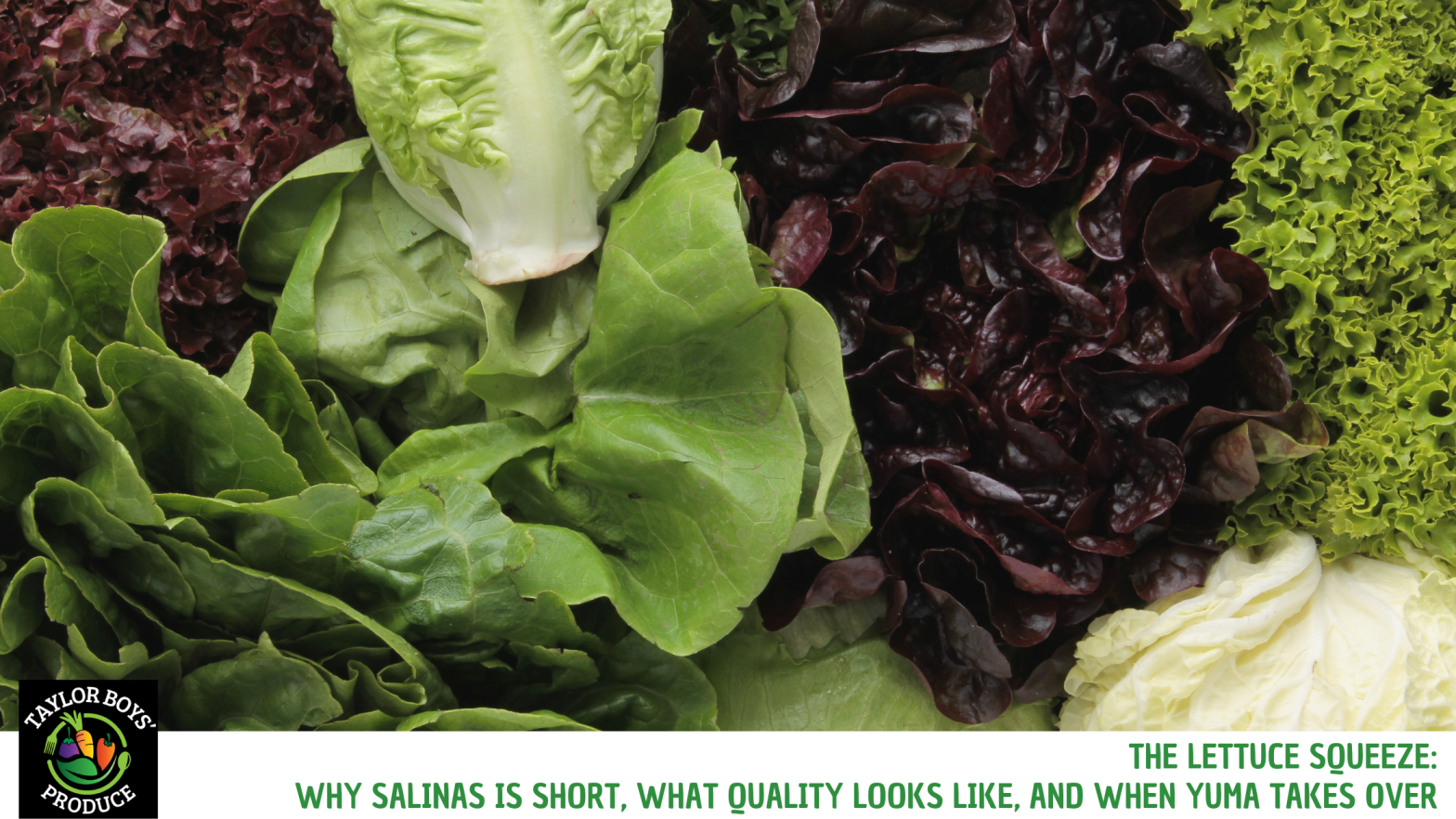The Lettuce Squeeze: Why Salinas Is Short, What Quality Looks Like, and When Yuma Takes Over
If lettuce has been tight and more expensive on your orders lately, you’re not imagining it. As of October 31, 2025, the Salinas Valley is winding down for the season with lower yields and notable quality defects, while shippers stage the annual move to the desert. Here’s what’s going on—and what to expect next.
Why supplies are short right now
- End-of-season disease pressure (INSV). The Impatiens necrotic spot virus—spread by thrips—has been the leading cause of supply cuts in late-season Salinas lettuce, reducing yields and pushing markets higher. Reports this month cite INSV as the primary driver of shortages.
- Heat/hail/rain swings reduced pack-outs. Heat spells, hailstorms, and rain events this season added stress, setting up more defects and lower salable volume as fields mature. That’s contributed to a quicker seasonal fade in Salinas.
- Seasonal transition timing. October always brings a hand-off: Salinas declines before the desert (Huron/Imperial/Yuma) is fully online, creating a temporary supply gap.
What buyers see on quality
Expect variability lot-to-lot. Inspectors and market reports have flagged:
- Lighter weights & “puffy” heads (iceberg), plus misshapen heads and overall smaller profile.
- Tip burn/internal burn, dehydration/wilting, growth cracks, insect pressure, and discoloration/pinking on ribs and butts.
These issues trace back to late-season weather stress and INSV pressure in Salinas. Tight supplies have also left some shippers sold out on certain days.
When does Yuma start—and when will it feel better?
- Bridge step (Huron, CA): Huron kicked off in October to help cover the gap. However, demand still exceeds supply so this has not provided relief for most items.
- Yuma, AZ start: Industry updates indicate Yuma starts harvesting the week of November 10, with processors/cross-docks not shipping out until the following week of November 17. Plan on a staggered ramp through late November as fields come into steady volume.
- General rule of thumb: The desert season runs November–April, supplying most of the nation’s leafy greens through winter.
Practical buyer tips (right now)
- Be open to accepting substituted items (e.g., swap shredded iceberg with whole iceberg, romaine heads with romaine filets, or spring mix instead of salad mix).
- Include customer preference in orders by requesting customers order lettuce even when it is a normal sandwich topping or ingredient.
- Check in product at time of delivery, refusing substitute products at time of delivery. Credits will not be issued for items included in shortages.
- Expect markets to stay elevated until the Yuma ramp stabilizes late November; improvement should follow as fields hit stride—weather permitting.
Other effected items:
- Strawberries are experiencing quality issues due to weather conditions
- Broccoli is grown with lettuce products and is subject to the same issues but currently we have been able to meet demand. This could change in the coming weeks.
Taylor Boys Produce provides the fresh farm produce to many of the areas restaurants, cafeteria’s combined with next level customer service.
Stay connected with us on our social media channels. Facebook | Instagram | LinkedIn



